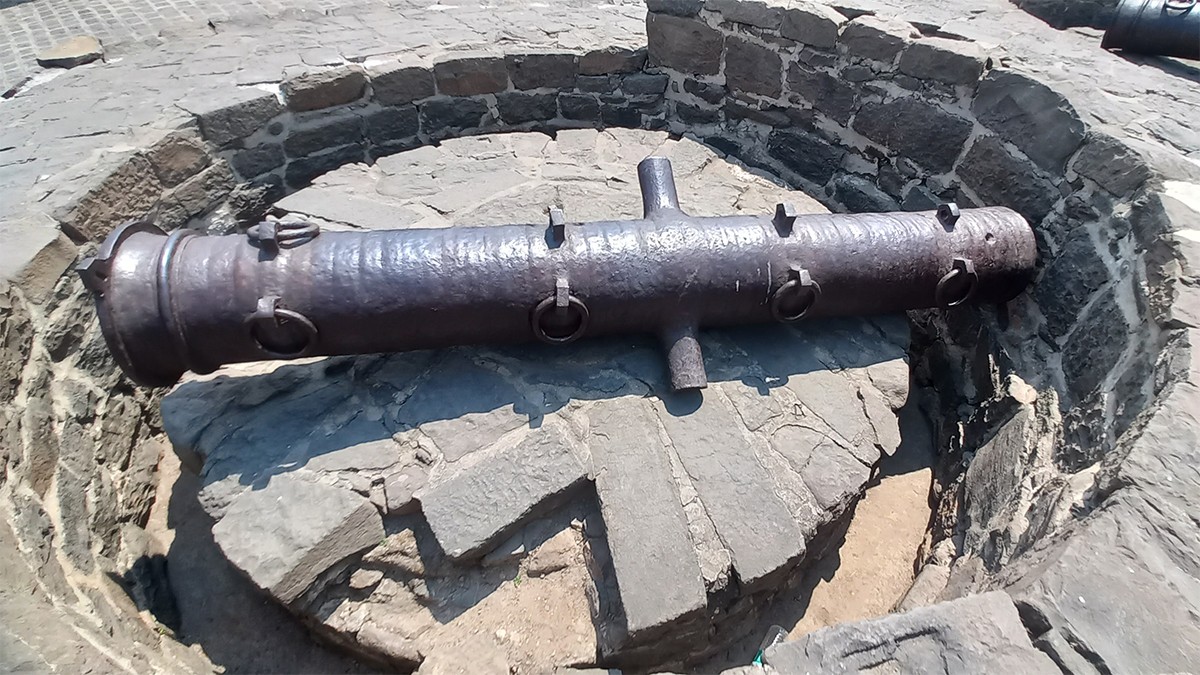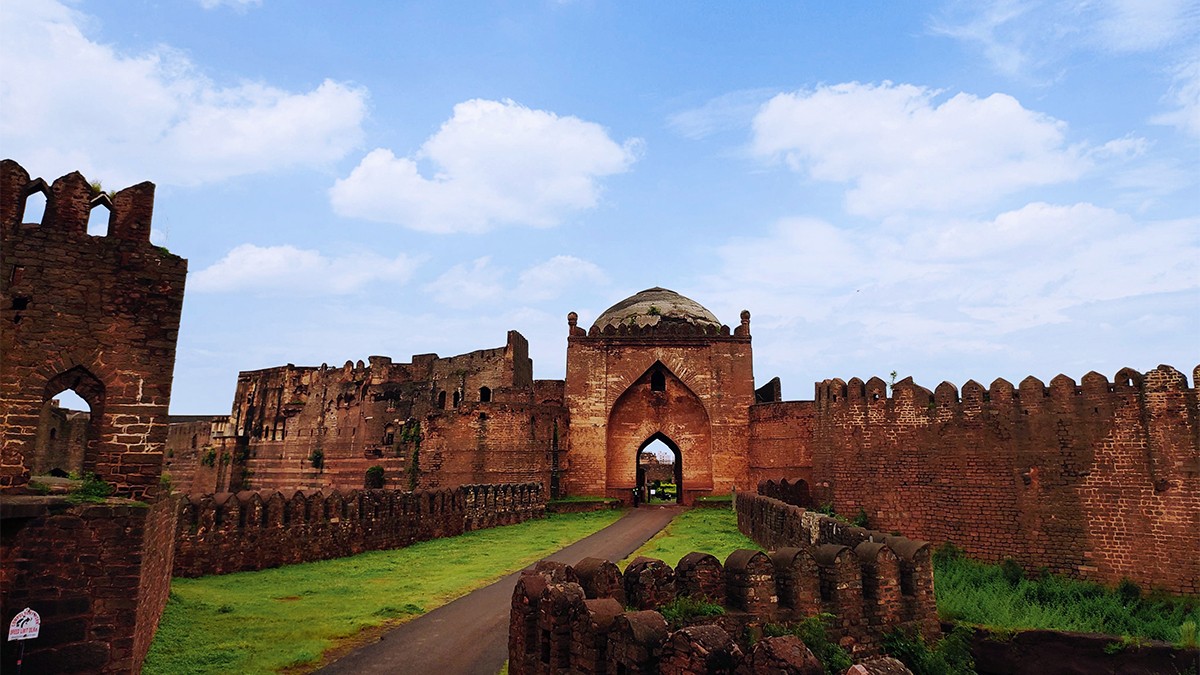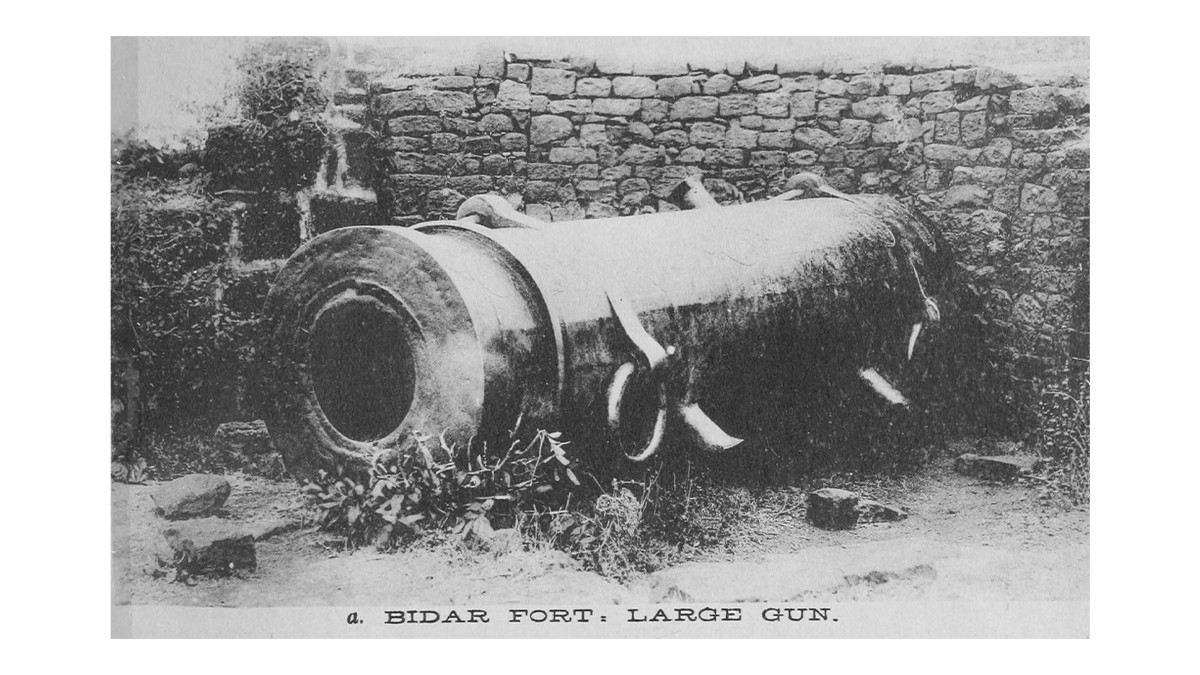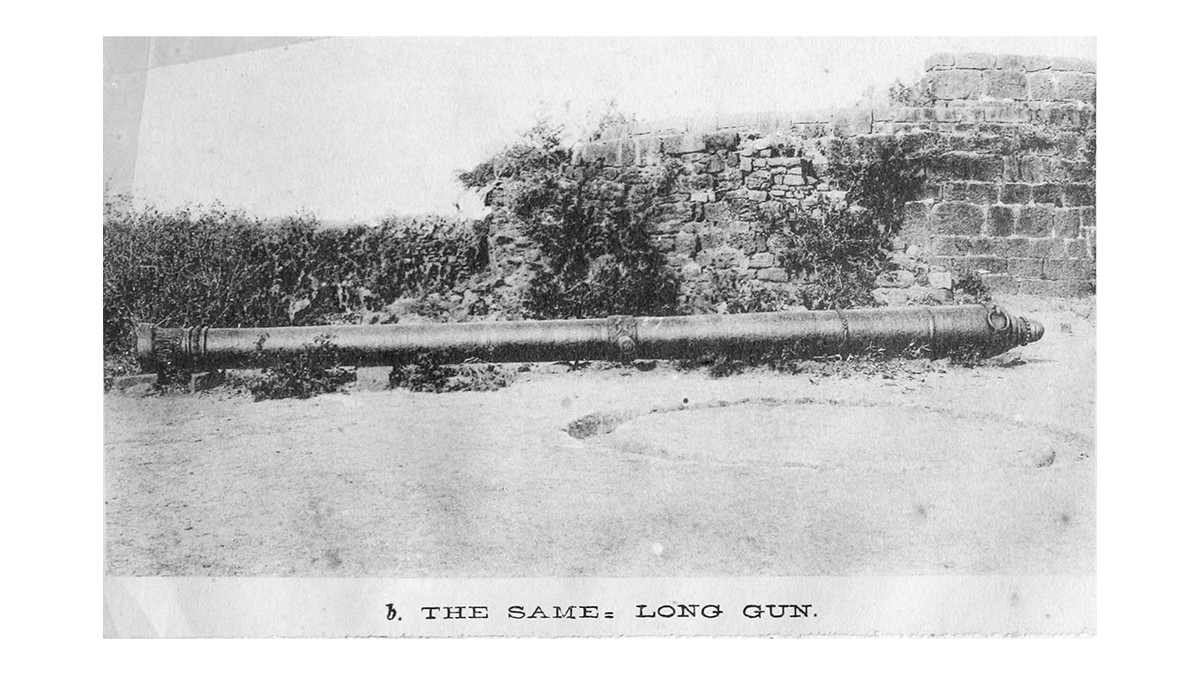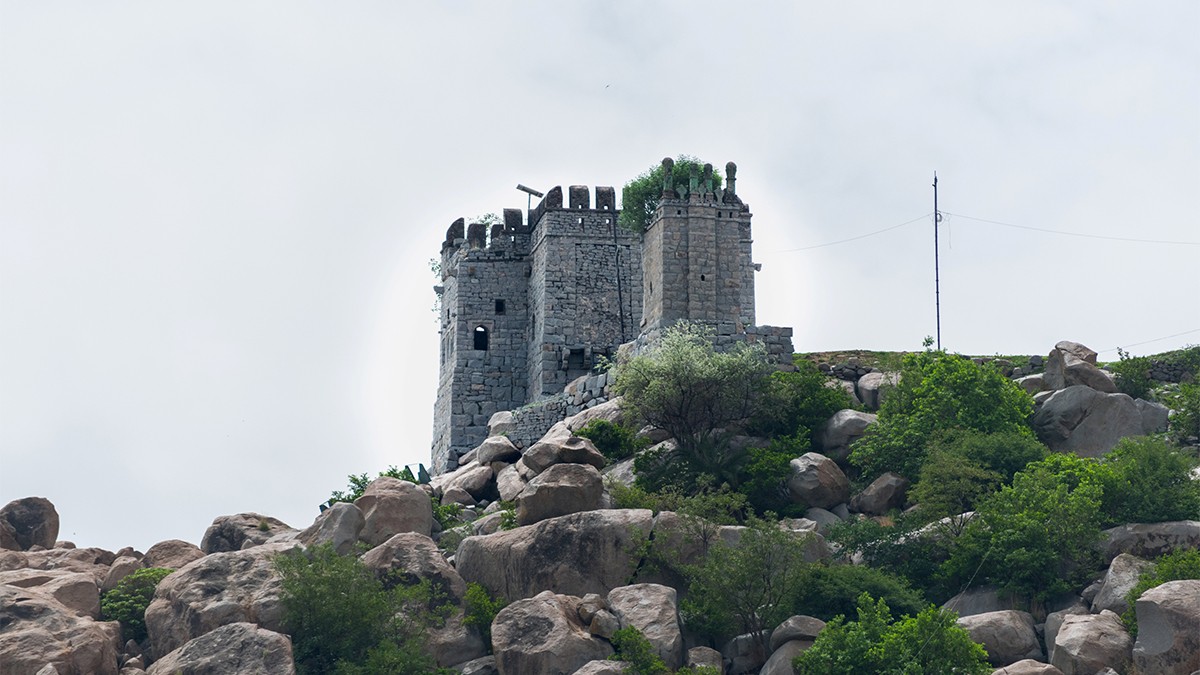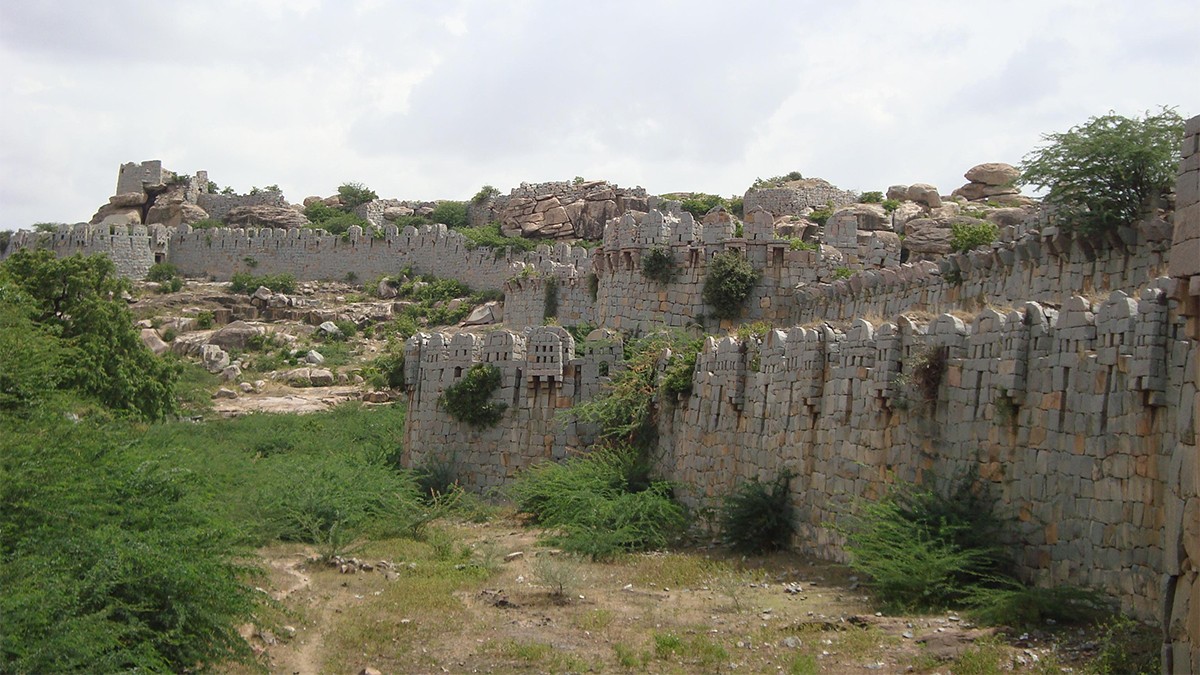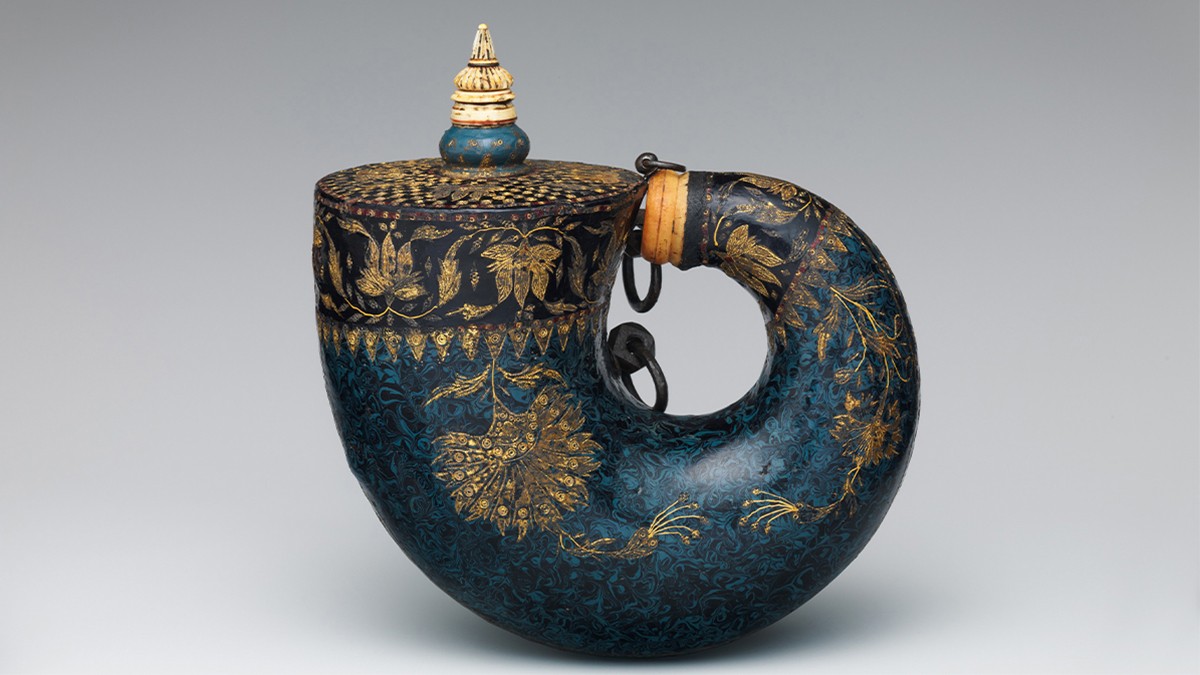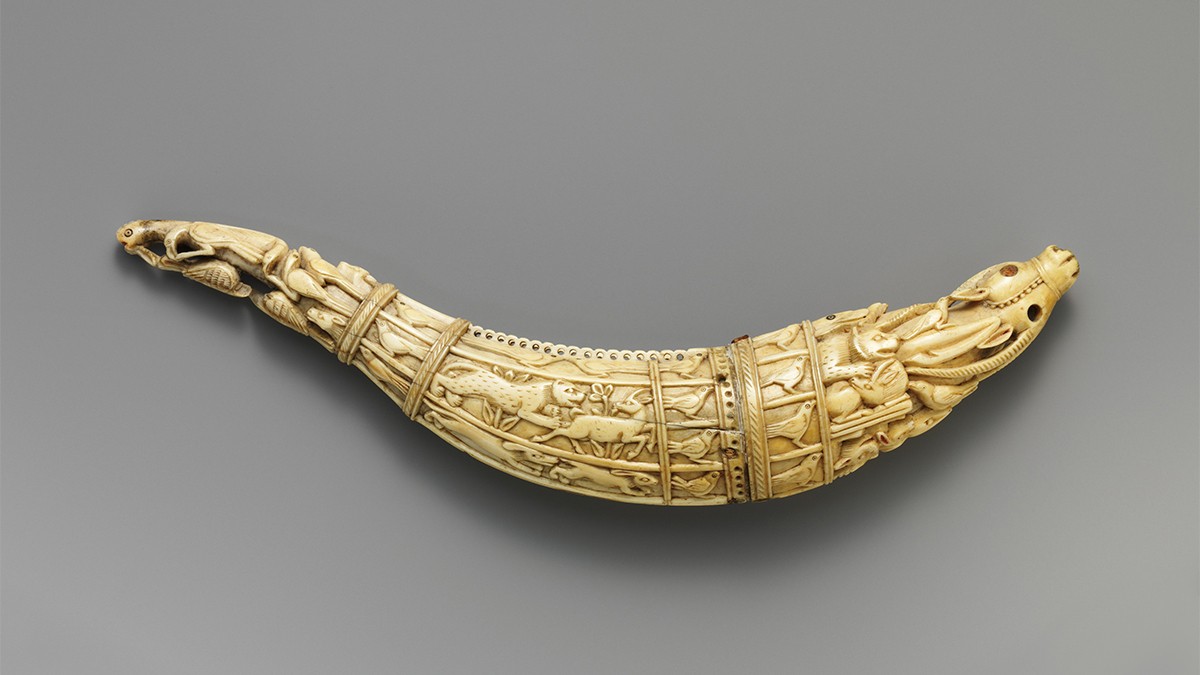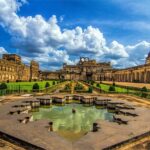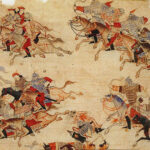Fortifications in the Deccan; Experiments with Gunpowder and Cavalry
1450–1600
By the 1460s, the Bahmani Sultanate forts of Bidar, Kalyana and Raichur have gun ports incorporated into their architecture, with fortifications inspired by the military engineering styles prevalent in Western Asia at the time. Cannon technology and artillery likely arrived in the region through contact with Mamluk Egypt and the Ottoman empire, and from European military developments. The splintering of the Bahmanis and the emergence of smaller Sultanates drives further innovations in gunpowder technology, bringing the Deccan on par with Europe; nevertheless, the Vijayanagara empire remains dominant in the region through its use of conventional cavalry and infantry warfare.
Through the sixteenth century, the sultanates absorb developments in military technologies from the Ottomans and the Portuguese, and invest in developing new gunpowder warfare technology, from artillery of different calibres to cannons that can be made mobile to cover more ground during an attack. The ammunitions development is matched by architectural changes to fortifications, such as the use of cavaliers that enhance the defences of forts. Vijayanagara’s adoption of these technologies is relatively hesitant and does not factor in corresponding changes to defensive architecture. The military gulf between the Bahmani Sultanate and the Vijayanagara empire gradually widens.
Bibliography
Eaton, Richard M. A Social History of the Deccan, 1300–1761 Eight Indian Lives. New York: Cambridge University Press, 2005.
Kanisetti, Anirudh. “Guns, Blood, Bronze: The Southern Sultans Led India’s ‘Military Revolution’.” The Print, February 24, 2022. Accessed October 6, 2023. https://theprint.in/opinion/guns-blood-bronze-the-southern-sultans-led-indias-military-revolution/844776/.
Khan, Iqtidar Alam. “Early Use of Cannon and Musket in India: A.D. 1442–1526.” Journal of the Economic and Social History of the Orient 24, no. 2 (1981): 146–64. https://www.jstor.org/stable/3631993.
Feedback 
This entry appears in
Art in South Asia
Visit Timeline
Associated Timeline Events
First Published: March 11, 2024
Last Updated: May 20, 2024



